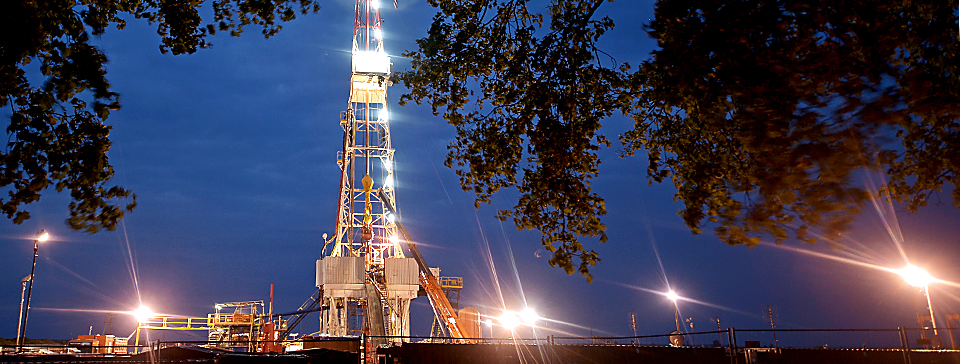
Market area
Our achievements to date
Imports
Following renegotiations of the pricing formula in import contracts, PGNiG signed annexes to two material gas supply contracts.
In October 2012, PGNiG and VNG-Verbundnetz Gas AG executed Amendment No. 1 to the Lasów gas sales agreement of August 17th 2006, effective until October 1st 2016. The parties agreed on a new pricing formula based on the prices of petroleum products and current market prices of natural gas, as well as a new capacity charge rate. The amendment came into force on October 1st 2012.
In November 2012, PGNiG SA and OOO Gazprom Export executed an annex to the contract for sale of natural gas to the Republic of Poland, dated September 25th 1996, effective until December 31st 2022, whereby the pricing terms for the gas supplies to Poland were changed, also retroactively with respect to the gas volumes purchased in previous periods. The new pricing formula reflects the developments that have occurred on the European gas market in recent years, and takes into account the prices of petroleum products and the market prices of natural gas. Following negotiations with OAO Gazprom/OOO Gazprom Export concluded in November 2012, PGNiG obtained an over 10% price reduction on the Russian gas.
In order to reduce gas acquisition costs, PGNiG entered into an agreement with OGP Gaz-System SA for the provision of virtual reverse flow services on the Yamal gas pipeline in the period from January 1st 2012 to December 31st 2015.
In an attempt to diversify the supplies of imported gas, the PGNiG Group increased the volumes of gas purchased under short-term contracts. The purchases were contracted chiefly by PGNiG Sales & Trading.
In 2012, PGNiG Sales & Trading started to trade in natural gas in Germany through the European Energy Exchange (EEX) and OTC transactions. Moreover, in 2012 the company acquired 100% of the shares in XOOL GmbH, whereupon it launched sales of natural gas to end customers in Germany.
Sales
PGNiG is the largest supplier of natural gas in Poland. PGNiG’s share in the gas market is approximately 96%, the remaining 4% are suppliers from outside the PGNiG Group, which usually purchase gas from PGNiG. In 2012, the PGNiG Group sold 14.9 bn m³ of gas, of which 13.9 bn m³ were sold from the domestic transmission and distribution systems, 0.7 bn m³ were sold directly from the fields, and 0.3 bn m³ were sold on the German market.
In September 2012, PGNiG launched sales of electricity to business customers (tariff groups A, B and C), and soon afterwards, in the first quarter of 2013, it launched sales of electricity to households (tariff group G).
In December 2012, PGNiG commenced trading in natural gas on the Power Exchange. In accordance with a decision by the President of the Energy Regulatory Office, trading on the exchange is exempt from the tariff obligation.
The Company continued to work on the LNG-derived gas fuel E distribution project in the towns of Ełk and Olecko. The project involves construction of an LNG regasification station and two-step pressure reduction, metering and odorising stations in Ełk and Olecko, and switching customers in those towns to high-methane gas. In 2012, an agreement was signed for EU co-financing of the project under the Infrastructure and Environment Operational Programme.
Distribution
Also in 2012, the Gas Distribution Companies worked on extending and upgrading the gas network, and connecting new customers to both existing and newly built sections. They also replaced the most failure-prone sections of cast-iron piping and modernised the longest operating sections of the piping whose continued use posed a safety hazard and caused substantial gas losses.
The Gas Distribution Companies also worked on projects for which they concluded agreements for EU co-financing under the Infrastructure and Environment Operational Programme.
Storage
Until May 31st 2012, PGNiG acted as the storage system operator. In May 2012, Operator Systemu Magazynowania Sp. z o.o., a subsidiary of PGNiG, became the storage system operator. The company was also granted a licence authorising it to store gas fuels in storage facilities, valid from June 1st 2012 through May 31st 2022.
In 2012, PGNiG completed the expansion of the Strachocina Underground Gas Storage Facility and put in service one of the caverns of the Mogilno Underground Gas Storage Facility. As a result, the working capacities of the high-methane gas storage facilities increased to 1,821.9 m m³ at the end of 2012. The Company continued to work on expanding the Wierzchowice Underground Gas Storage Facility, the largest facility of this kind in Poland, and on constructing the Kosakowo Underground Gas Storage Facility. The expansion of the Strachocina and Wierzchowice Underground Gas Storage Facilities and the construction of the Kosakowo Underground Gas Storage Facility received EU co-financing under the Infrastructure and Environment Operational Programme.
As at December 31st 2012, the PGNiG Group had made available a total of 1,821.5 m m³ of working storage capacities for third party access and for OGP Gaz-System SA. Of this volume, 1,796 m m³ were made available under long-term agreements and 25.5 m m³ under short-term agreements. Additionally, 0.39 m m³ of the storage capacity of the Mogilno underground gas storage cavern is used to cover the facility’s own needs.
Power Generation
The PGNiG Group continued to work on the “Construction of a CCGT Unit in Stalowa Wola” project. In 2012, the general contractor for the Stalowa Wola unit was selected, the project execution agreement was signed and the credit facility agreements securing its financing were executed. In addition, preparations for the construction of a 450 MW CCGT unit at the Żerań CHP plant were launched in 2012.






